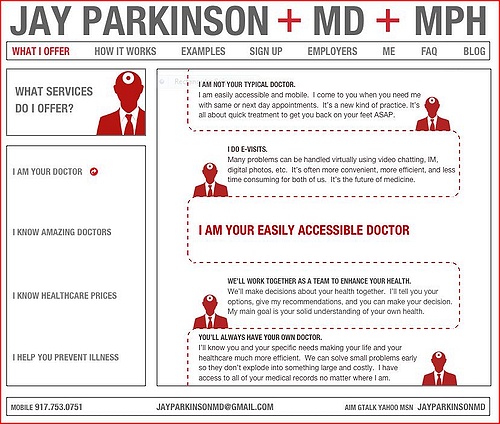 I started this post a week ago, than canned it, not wanting to be part of the “storm in a teacup“, created by Oracle’s announcement that they would open up their annual OpenWorld conference to bloggers for the first time. The software giant also actively reached out to 30 or so bloggers, including several of my fellow Enterprise Irregulars.
I started this post a week ago, than canned it, not wanting to be part of the “storm in a teacup“, created by Oracle’s announcement that they would open up their annual OpenWorld conference to bloggers for the first time. The software giant also actively reached out to 30 or so bloggers, including several of my fellow Enterprise Irregulars.
It appears that most EI’s will not attend, partly since Oracle does not pay for expenses, partly because there is no word about access to Executives. More important than the expense issue was the reasoning:
“We’re not picking up travel costs or expenses, sorry. This will keep you impartial. If you see me, I’ll give you a pat on the back, how’s that instead?
Ahhh…the enterprise bloggers must be a bunch of prima donnas, used to getting their full expenses paid at SAP’s annual conference and other events.. SAP “bought them” and they are biased, right? Wrong.
The reality is that unlike the press and analysts, the group bloggers are often lumped into, may of us are independents or are in small businesses, don’t have corporate expense accounts to lean on, and simply can’t afford to travel to conferences on our own. Even on a fully reimbursed trip, taking 3-4 days off business is a significant sacrifice. Of course that’s the bloggers’ side, why should Oracle care? Whose loss is it anyway?
What does SAP get for the not-so-negligible travel budget they spend on enterprise bloggers? The one thing they don’t get is bias, “loyal”, positive reviews.
Fellow irregular and ex-Gartner Vinnie Mirchandani can hardly get more critical, regularly beating up SAP on issues like pricing, maintenance, innovation (or lack of) – yet he is invited back to all SAP events. Fund Manager, former SAP investor and blogger Jason Wood is also a regular at SAP events, which certainly does not prevent him from expressing his doubts / concerns. Dennis Howlett is no exception, and the list could go on.
SAP’s recent announcement of their new hosted SMB solution, Business ByDesign is another good example. While most of the media reprinted SAP’s press release, you won’t find it anywhere in the “enterprisey” blogs: what you will find instead is independent thinking, analysis (right or wrong) and dialogue. The bloggers’ verdict was generally positive, mostly about the feature set/ technology, but several of us expressed doubt regarding execution: SAP’s market segmentation, potential self-cannibalization, ability to create mobilize a new, agile ecosystem capable to profitably execute in the new high volume/low price model, and help SAP reach their market goals.
Not exactly paid-off, loyal PR if you ask me… could it be that SAP knows something about the value of dialogue, in fact outright debate? They go the extra mile to provide bloggers with information, engage them actively. Round-table discussions with Hasso Plattner, Henning Kagermann, Leo Apotheker, Peter Zencke (did it all start with Niel’s chance encounter with SAP’s CEO?) and several other executives are highly appreciated, and believe me, it’s not one way PR-style briefing either. James ‘Redmonk” Governor says it best:
“As I have said before, you can buy my thinking, but you can’t buy my opinion.””
At SAP’s Teched 07 Conference James publicly disagreed with Peter Zencke about market segmentation, and the world did not come to an end; in fact the SAP Board Member happily continued the debate at the bloggers chat afterwards. Two weeks after the “incident” James moderated several sessions at Teched Europe, on SAP’s invitation. Don’t we all know companies where such behavior is the sure way to lose access and get yourself uninvited forever?
Bloggers are critical, opinionated, sometimes right, sometimes wrong, but never dull. But there’s a bigger picture here, other than external communication. I believe it’s not coincidental that the company that understands the power of dialogue has the most thriving online community I’ve seen in enterprise software.
Two years ago, when the external “Bloggers Corner” program started the SAP Developer Network (SDN) counted close to 600K members – today it’s 900K. It’s younger sibling, the Business Process Expert (BPX) network counts 200 thousand members. Between the two, discounting overlaps, it’s fair to say 1 million members participate in SAP’s online communities. This includes blogs, forums, wikis, videos..etc. SDN+BPX is a thriving support system: over 5,500 issues are posted daily, and the average response time is 20 minutes.
I think SAP has discovered something unique: they don’t have to give the code away yet they enjoy the benefits of “Open Source-like community“. The highest rated contributors don’t have to look for projects any more, they are in high demand. SAP Ecosystem Becomes a Booming Economy – declares research firm IDC.
The Ecosystem has become an organic part of how SAP conducts business, and there is no turning back. SAP Executives are quite aware that competitors comb through the SDN / BPX entries daily, and they certainly lose some competitive edge – but there is no other way to “run” the ecosystem. The Genie is out of the bottle, and they don’t want to send him back.
The role of the ecosystem will become even more important now that SAP is more aggressively pushing into the mid-market. This is a high-volume, low-margin market, sales, deployment, support all different from what SAP traditionally knows. Successful partnering will make or break it, and apparently SAP understands it.
I’ve come a long way from the original issue of blogger participation at Oracle’s OpenWorld, and not without reason. This issue has sparked a debate, stirred up some emotions, and I don’t want people to think it’s all about greedy (or hungry) bloggers whining about not getting their expenses paid. Nor is it a SAP Good Guy, Oracle Bad Guy issue. Both companies have their own culture and will continue conducting business their own ways.
I believe Oracle’s first approach to bloggers (late or mistaken as it is) is a welcome move, and it’s good to see they are open to learn and improve:
“This is new territory for a lot of us, and personally, I’d like to hear a lot more opinions and suggestions before I support one path or another.”
Some people in Oracle had to fight for this and they should not be given a (very![]() ) hard time. I certainly hope the initiative will not get shut down due to the initial negative feedback. I also hope Oracle management will realize how one step leads to another and that openness actually improves business in the long run. I used SAP as the positive example, because that’s the best showcase I know, and they are pioneering in this field – but if you know any other examples for actively embracing community, please share it in comments below.
) hard time. I certainly hope the initiative will not get shut down due to the initial negative feedback. I also hope Oracle management will realize how one step leads to another and that openness actually improves business in the long run. I used SAP as the positive example, because that’s the best showcase I know, and they are pioneering in this field – but if you know any other examples for actively embracing community, please share it in comments below.
Oh, and if you happen to be in the San Francisco Bay Area, by all means, check out Lunch 2.0 @ Oracle tomorrow.
Update (10/24): …and not a happy update, for that matter. Just as I praised SAP for “getting” social media, here’s this disturbing post from Steve Mann, VP at SAP’s Global Marketing. Apparently SAP HR wants him to remove the link to his personal blog from his corporate signature. I guess I should correct my statement: SAP gets social media … just not everyone, all the time ![]()

 It’s that time again: now that Google Maps went social, allowing user profiles, let’s spend a moment of silence in memory or of the mashup that has been doing the same for a long time:
It’s that time again: now that Google Maps went social, allowing user profiles, let’s spend a moment of silence in memory or of the mashup that has been doing the same for a long time:  Since I’ve just advocated
Since I’ve just advocated 
 I briefly wrote about my dismal customer support experience in
I briefly wrote about my dismal customer support experience in  Now that Jaiku is part of Google, for many observers the question is
Now that Jaiku is part of Google, for many observers the question is 


Recent Comments